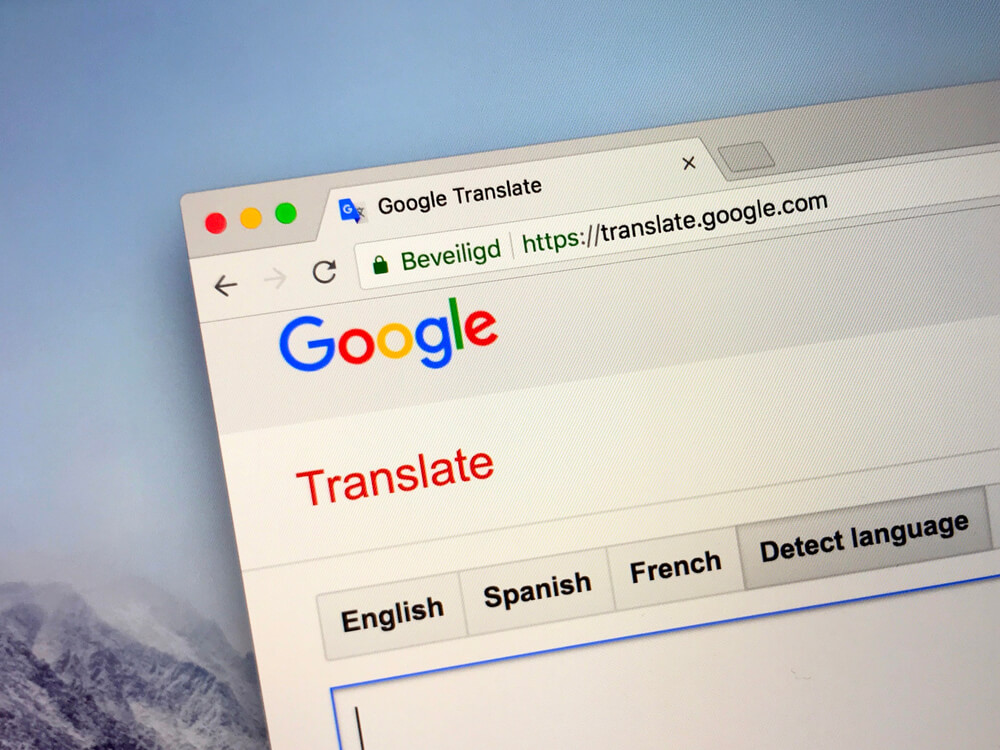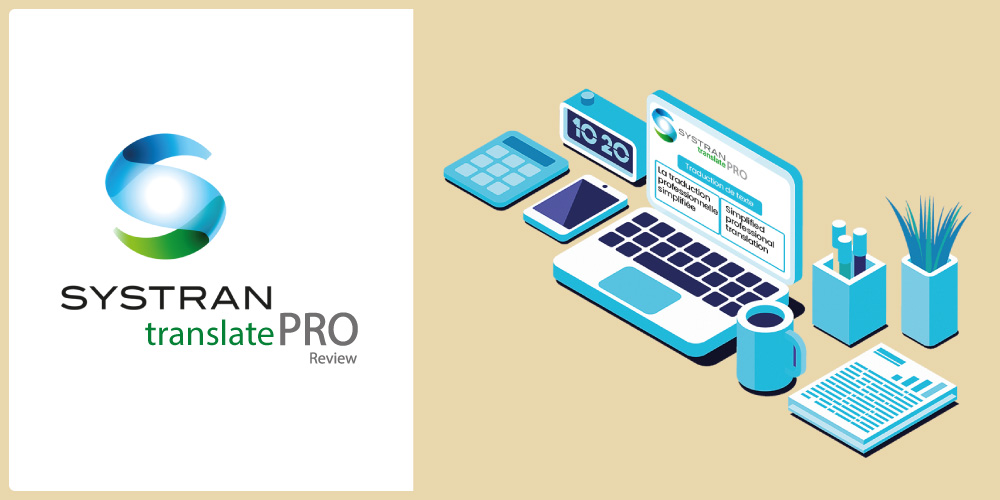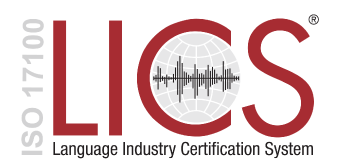The Microsoft Translator promises a lot, but can it also deliver?
When you look at the endless functions of the Microsoft Translator for the first time, it might seem a bit overwhelming.
The translation tool offers a desktop app and a mobile app that works both online and offline. It allows you to input the text you want to translate via keyboard, speech, or handwriting, and of course, similar to the Google Translate App, it also translates texts in photos.
In addition to this, the desktop and the mobile version come with a phrasebook that allows you to practice some of the most important phrases in foreign languages for your next holiday.
And leaving the best for last, the Microsoft translator is already integrated into Outlook, Word, Excel, and PowerPoint.
So, one thing can be said for sure, the Microsoft translator truly doesn’t lack application possibilities, but what about the quality of the translations?
Functions of the Microsoft translator app for Desktop and Mobile Devices
The functions of the desktop version and the mobile app are almost identical. Both apps offer the following functions:
- Text and speech translation
- Translation of photos and screenshots
- Phrasebook
- Translation of conversations across devices
In addition to this, you can download languages packages for offline use on the mobile app.
How to download languages for offline use:
- Open the app
- Click on the keyboard symbol
- At the button of the screen, you can select the source and target language. Click on one of those and a list with all the available languages will open up.
- Click on the arrow symbol right next to the language to download the language of your choice

Whilst text and images can be translated offline; unfortunately, the same cannot be said for the voice translation function.
In contrast to most other translation tools, the Microsoft language translator comes with a phrasebook. It contains the most common phrases for topics such as travel, food, emergencies, health, and technology.
The phrasebook is not very extensive, nevertheless, it is a nice feature to have for all those who are also interested in learning a language.
And in case you want to practice your language comprehension skills or your pronunciation, you can also listen to every translation.
Supported Languages
Microsoft Translator supports more than 70 languages. However, not all functions are available in those 70+ languages. For a list of functions available for the language pair of your choice, click here. Unfortunately, the list doesn’t include which languages support the photo/image translation option.
Languages available include:
- English
- German
- Spanish
- French
- Chinese (Traditional and Simplified)
- Arabic
- Hebrew
- Japanese
For comparison: Google Translate offers text translation in more than 100 languages and has the additional feature: instant camera translation. This means that you don’t have to snap a photo first, you only need to point your camera towards the text you wish to translate.
Microsoft Translator Download
Microsoft Translator is free.
You cannot access the desktop version via your web browser. Just like the mobile version you first need to download the Microsoft language app.
However, if you don’t want to install an app to translate text, you can also use the Microsoft Bing Translator, which can be accessed via your web browser.
Microsoft Translator App – Review
We had presumed that the Microsoft Translator app might have its issues with long, convoluted sentences, but we were disappointed that it sometimes even failed to translate the most simple sentences.
When abroad, one of the first questions you get is “Where are you from?”
This fairly simple sentence turned out to be a real challenge for the Microsoft Translator.
We chose to translate from Spanish to English and we tested the sentences on the desktop app as well as via speech recognition on the mobile app.
„De dónde vienes?“ means the same as „De dónde eres?” and translates to “Where do you come from?”/ Where are you from?”.


We encountered the following problems with the translation:
- The speech recognition did not recognize our question. The correct translation would have been: “Hello, I’m from Barcelona. Where do you come from?”, the Microsoft Translator however turned it into “Hi, I’m from Barcelona, where you come from”.
- In the next example, the app translated “Where did you come from?”. However, “Vienes” is a verb in the present tense, so it makes no sense that the translation is in the past. Especially, because “Where did you come from?” doesn’t have the same meaning as “Where are you from?”.
We tested the same sentences using Google Translate. The Google app had no issues translating our request correctly.

However, what we have noticed, when using the Microsoft Translator app, is that the longer the text is, the better the results are. This indicates that the machine needs more context to deliver better results.

Application possibilities of the Microsoft Translator App
There are many application possibilities, but as our examples have shown, they don’t always deliver the desired results.
In comparison, its competitor Google Translate did a better job.
In general, it can be said that translation results tend to be better for those languages whose databases have been fed with a lot of data. Therefore, it is likely that the translation between common language pairs is better than between less common ones.
However, if the goal of a translation is to understand the rough context, then the Microsoft Translator is fit for the job. The app can also be useful as a travel companion, either to translate a photo of a street sign or a menu or to talk to the taxi driver via speech recognition.
But as our examples have shown, the app doesn’t always know what we are talking about. Having said that, this is where the phrasebook feature comes in handy!
Microsoft Translator for Microsoft Word
Does Microsoft Word have a built-in translator? The answer is yes, in fact, the Microsoft Translator is also integrated into PowerPoint and Excel and all you require to use the translator is a Microsoft Office package and a stable internet connection.
How to use Microsoft Translator for Word:
- Open the document you wish to translate
- Then go to the “Review” tab. Here you will find the “Translate” button.
- Click on “Translate”
A window will open on the right side of your screen. You can then click the tab “Selection” to translate only a certain part of the text or you can click on the tab “document” to translate the entire document.
You can use automatic language detection for the source language or you can set the source language yourself, just like the target language.
Translate selection
-To translate a selection, simply select the text section you wish to translate. This selection, including the translation, will appear in the window on the right.
Translate document
Click on the “Document” tab, then specify the target language and click “Translate”. A new document with the corresponding translation will be created.
For test purposes, we chose a paragraph from our Blockchain article and asked the Microsoft Translator to translate it from German to English. We inserted the translation in blue below the original text.

The translation isn’t bad, but it is not perfect either.
For example, the German word “Block” is singular, the translator however translated it into the English plural “blocks”. That might seem like a minor mistake, but it changes the meaning of the text.
So, whenever you need to translate a text where details matter, you might be better off with a different translation tool or alternatively, hire a professional language service provider like EHLION for your translation needs.
Microsoft Translator – PowerPoint
The translation process in PowerPoint works similarly to the Microsoft Word translator.
To use the translator, follow the same steps as in Microsoft Word.
The difference between PowerPoint and Word however is that the translator doesn’t create a new file that contains the presentation.
- First, select the paragraph you want to translate.
- Then create a new slide and insert the translation there.
We took an excerpt from this article and asked the Microsoft Translator to translate it into PowerPoint.

We translated the same sentences with DeepL. In comparison, the DeepL translator did a slightly better job.

Microsoft Translator for Excel
There is nothing much left to add about using the Microsoft translator in Excel as it works pretty similar to Word and PowerPoint.
After you have opened the translator as described above, you simply click on the cell you wish to translate and the translation will appear in the Window on the right.
Test results for the Microsoft Translator integration
One of the biggest advantages is that you no longer need to switch between your Office programs and your web browser if you want to translate something. This can save you time and stress.
And if you only want to understand the rough content of a document the MS Translator is sufficient.
But in case you need to translate a PowerPoint presentation for an important business meeting with a client from China, then the MS Translator shouldn’t be your first choice.
Conclusion – Microsoft Translator – many functions, questionable quality
At a first glance, Microsoft Translator looks very promising, but unfortunately the same cannot be said regarding the translation quality
The mobile app looks elegant, the results however not so much! In comparison, Google Translator did a better job.
And no doubt, the Microsoft Translator integration is handy, if you need a rough translation of a text, but it shouldn’t be used in a professional context.
In short, in our test, the Microsoft text translation didn’t perform as well as its competition.
We translated the same texts with Google Translate, DeepL, and SYSTRAN, and during several tests, they made fewer mistakes and sounded more natural.
As an alternative to the Microsoft Translator for Office programs, you might want to consider downloading DeepL for Windows.
The takeaway from this test is that apps like Microsoft Translator are better left for more casual translation requirements and let the professionals take care of your professional translation needs.
Whether you require a professional translation, an interpreter, or website localisation, with our wide range of language services, we at EHLION make sure that your messages get delivered on time and correctly in every language!
Get in touch with us and let us get started with your next translation project.












